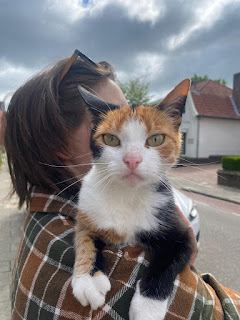Bike Suburbs
For the final part of this class, we are assigned to do a project on an aspect of Dutch/Danish bike culture or infrastructure and relate it back to the US. The topic I am going to cover is bike suburbs. In the US we love our suburbs, but the way we design them makes them harmful to the environment and not conducive to sustainable living. American suburbs are very much centered around the car. You need a car to do pretty much anything or go anywhere. This leads to a lack of a sense of community in the neighborhood. There isn't as much walking around and seeing your neighbors. When you are home, you're in your house, and when you leave you go and get right into your car, limiting any chance interactions you can have with the people around you. As a result, American suburbs are very sleepy enclaves and can even be dangerous.
Most people believe that a busy city is more dangerous than a sleepy suburb, but a lot of the time the opposite is true. Jane Jacobs, a famed urbanist coined the term "eyes on the street" which is referring to the fact that the more people who are out and about, interacting with public spaces, the safer those spaces will be. In places like suburbs, you have relatively few people walking around or even looking outside from their homes to the street, so outside can be a desolate place, ripe for crime.
In the Netherlands, they also have suburbs, but they are more mindfully planned and are bike and pedestrian friendly. In the US if you've ever tried to bike or walk out of a suburb, it takes forever and you have to go through a maze of twists and curves and turns to do it. In the Netherlands, the same is true if you're in a car, but they also have bike and pedestrian cut throughs to make it convenient for those modes of transportation. In fact, they even plan them so its purposely more inconvenient to drive a car then to bike in these areas. An interesting case study of this is the city of Houten which is located just outside of Utrecht.
Houten is probably the best example of a bike suburb that I saw while abroad. It is designed to have a ring road around it for cars, with spokes to insert into individual neighborhoods. If you're in a car you have to go out through your spoke and back onto the ring road to get anywhere else in the city. Within the ring road, there is a robust bike and pedestrian network which is quick and easy to navigate.





Comments
Post a Comment